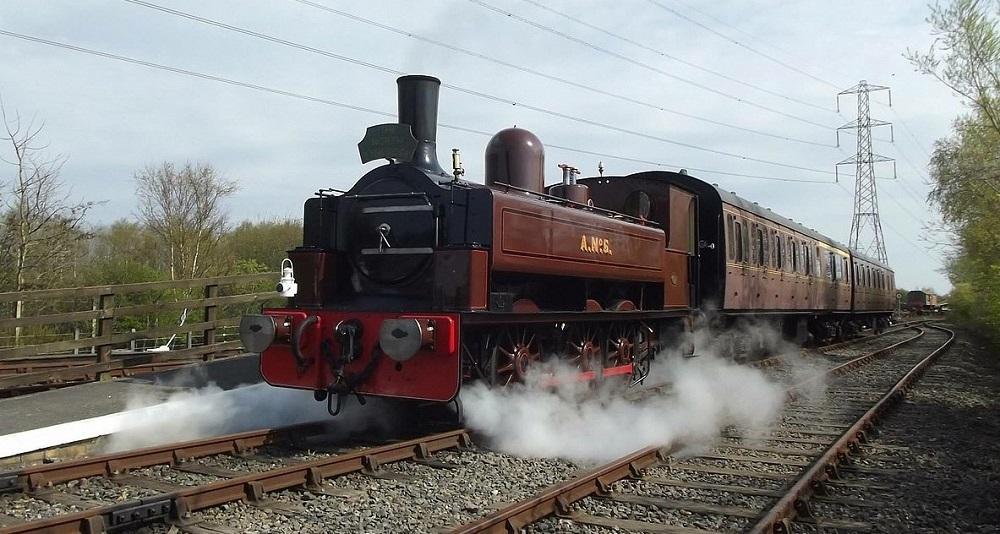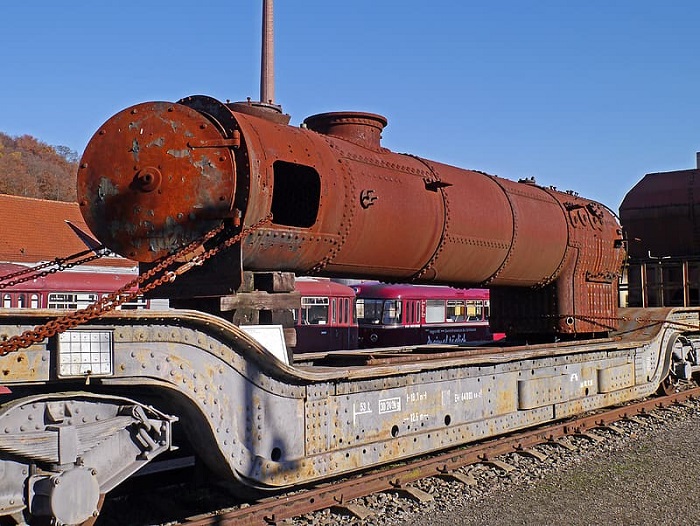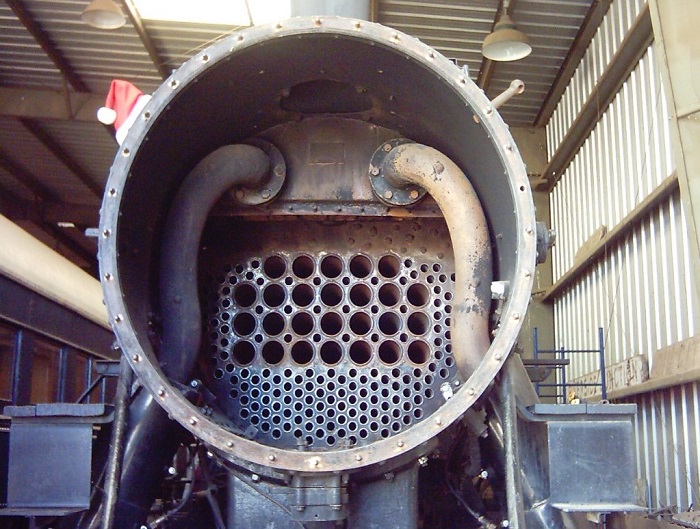Locomotive boilers are among popular boiler types and by the end of this article, you’ll know why. In this article form Linquip you’ll learn all about Locomotive boilers, their parts, how they work, etc. Then, you can consider whether they are the right choice for your specific purpose or not. If you are eager to know more about these boilers, then continue reading and expand your knowledge.
What is a Locomotive Boiler?
Locomotive boiler is a boiler type that is used to heat up the water and create steam from this water. This boiler sits horizontally, just like Lancashire boiler and Cornish boiler. Many people think that Locomotive boiler is a water tube boiler, but in fact, it’s a fire-tube boiler. Locomotive boiler’s main function is to generate a high steam rate.
Locomotive Boiler Parts
There are three main parts in this boiler including a horizontal cylindrical boiler baller, a smokebox, and a double-walled firebox. In this section, we will introduce the most important parts of this boiler to help you understand the Locomotive boiler diagram better.
Grate: Just like any other horizontal boiler, Locomotive boiler has a grate that contains the fuel used for combustion.
Fire Hole: This hole is at the rear end of this boiler which receives the solid fuel to be ignited into the furnace through the fire hole.
Boiler Tubes: These tubes receive the hot flue gasses and as a result, they are able to transfer the heat to the surrounding water.
Fire Box: The Fuel burns in the Firebox of the Locomotive boiler.
Smoke Box: When the burnt fuel passes through the fire tubes, this box collects the smoke of this burnt fuel and transfers the smoke to the environment through the chimney.
Chimney: The chimney receives the gasses and smokes from the smokebox to throw them out into the environment.
Superheater: This unit is responsible to superheat the steam before it enters the steam engine’s cylinder.
Fire Brick Arch: This arch is placed over the grate to stop dust, ash, and burnt fuel particles from getting into the fire tubes.
Steam Pipe: As the name suggests, the steam passes through this pipe. There are two steam pipes in this boiler: one between the dome and the superheater header, which is the main steam pipe, and another one that is used for connecting the steam engine to the superheater exit end.
Blast Pipe: This pipe sits above the steam engine and receives the exhaust steam. By creating an artificial draft, it transfers the smoke to the outside atmosphere through the chimney. Plus, by creating suction for the hot flue gasses, moves them forward through the fire tubes of the boiler.
Dome: This boiler part regulates the steam that’s produced through the steam pipe.
Regulator Valve: This unit is used for regulating the steam through the main steam pipe.
Superheater Element Pipes: The steam flows through these pipes and gets superheated.
Superheater Header: The steam that’s flowing through the steam pipe should go through the superheater header to be able to flow through the superheater element pipes.
Safety Valve: When the pressure of the boiler increases and passes the pre-defined level, the safety valve blows off the steam to prevent the basting of the Locomotive boiler.
Pressure Gauge: Shows the boiler pressure to help the safety valve.
Water Level Indicator: This instrument enables the boiler to know the water level and do the necessary procedures to keep the water at the desired level.
Ashpan: It’s a tray that’s under the grate to collect ashes.
Man Hole: This unit has been designed for the experts to enter the boiler and repair or maintain the internal parts of the system.
How Does a Locomotive Boiler Work?
The coil in the Locomotive boiler is inserted on the grate and then it is ignited from the fire hole. The result is the creation of hot flue gasses. These flue gasses flow through the fire brick arch to enter the fire tubes and prevents the burnt solid fuel particles from entering into the fire tubes. The flowing of the gasses inside the fire tubes will heat the water that surrounds them.
When the water gets hot enough, it turns into saturated steam and will be collected at the top of the boiler. This steam in the dome flows through the regulator valve and enters the main steam pipe to reach the superheater header. Then, it flows into the superheater element pipes and the superheated steam exits this unit and flows to the smoke box’s steam pipe. From there, the steam reaches the cylinder that contains the piston and moves the piston within the cylinder.
The wheels of the steam engine are connected to this piston and as a result, they start rotating. Then, exhaust steam flows through the blast pipe and pushes out the smoke and burnt gasses that are flowing through the smokebox from the fire tubes and throws them out through the chimney. The whole process provides the necessary steam for different applications in different industries. Locomotive boilers are mostly used in marines and railways but they have other applications too!
Locomotive Boiler Applications
These boilers are used in railway locomotive engines, steam rollers, traction engines and portable engines.
Locomotive Boiler Advantages and Disadvantages
Locomotive boilers are portable and therefore can be transported easily. They are cost-effective and have a high steam generation rate. But, they are not suitable for heavy-load conditions because they are not built for enduring the overheating of the boiler. Another disadvantage of this boiler type is that some of its parts are hard to clean.
The Essential Guide to the 4 Types of Air Compressors
So there you have it! All the basics you needed to know about Locomotive boilers, their advantages and disadvantages, their working principles, their parts, and lots of other useful information! Comment below and let us know what you think about this boiler type and sign up on Linquip to get all your answers from our experts right away!






